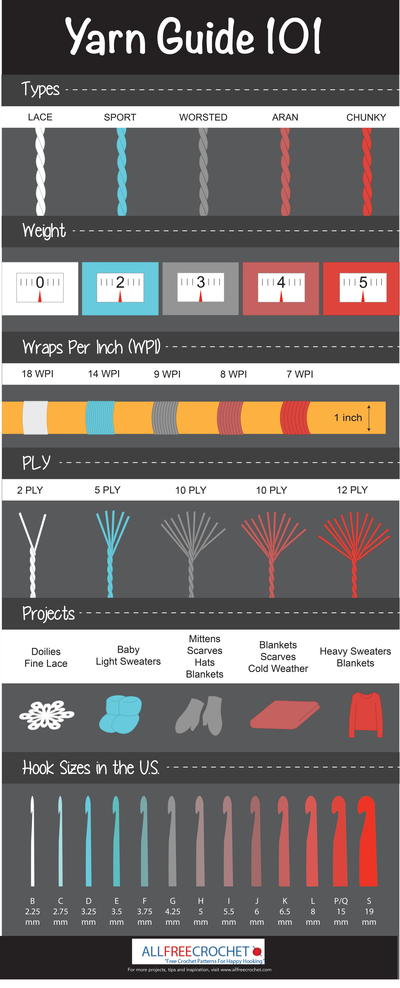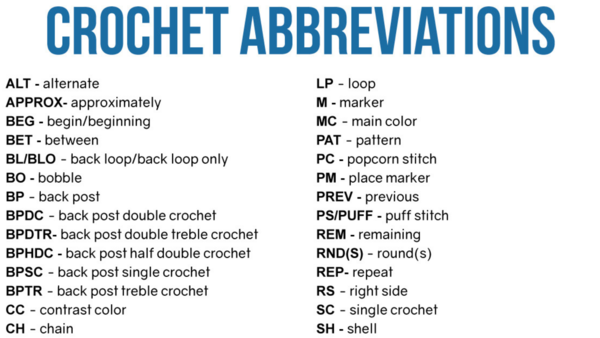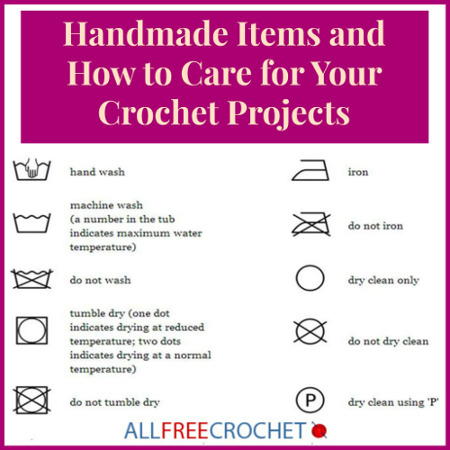1. DO familiarize yourself with the basics.
Take some time to learn about what you need to crochet (just a ball of yarn and a corresponding hook) and how to hold a crochet hook. There's a standard "correct" way to hold a hook, but everyone has their own variation. Experiment and find the position that's the most comfortable for you.
2. DO take time to learn about yarn.
Depending on the project you're making, you might prefer lace-weight yarn instead of worsted weight, or you might want pearl cotton instead of a wool blend.
Additonally, "I suggest "Don't" mix fibers unless you know how they
will behave together. For example, do not mix wool yarn with acrylic
yarn as the wool will shrink/felt at a different rate/amount than
acrylic. Also "Don't" mix different brands of yarn unless you know how
both brands behave after being washed. Not all brands are spun the same
and will sometimes behave differently in the washer (pilling, puffing
up, fading, etc)."

3. DO know how to choose your hook wisely.
Crochet hooks correspond with different yarn weights, so what you'll need depends on what you want to make. As you might expect, chunkier yarn needs bigger hooks, and lacier yarn needs the smallest ones. There's also the question of crochet hook type - do you prefer plastic hooks or bamboo? Or maybe you like working with aluminum.
4. DO learn the standard crochet abbreviations.
When you're reading a crochet pattern for the first time, you might be confused by all of the abbreviations. Take the time to know the basic ones, or keep a list handy, like the ones below, to use as a reference guide. Click here for the full downloadable chart of abbreviations.

5. DO learn the basic stitches.
No matter how complicated the finished pattern might look, it can most likely be broken down into the most basic of crochet stitches: the chain stitch, single crochet, double and half double crochet and treble crochet. Everything else is placement and technique.6. DON'T get cocky.
Once you know how to crochet the basic stitches, don't immediately jump into an intricate lace pattern. Like in all things, you have to walk before you run. Work up a few smaller, simple projects (think scarves or hats) with basic stitches before moving onto more stylistic crochet stitches and designs.
7. DON'T start a pattern before practicing a new stitch.
Practice makes perfect - this is true for all things. Read through how to work a stitch, watch a few videos to visualize it and work up a swatch to make sure you understand how to crochet it. Check out our beginner videos to help you master your next stitch!
8. DO read the pattern through before attempting it.
"One thing I have learned over the years is to
read the whole pattern and read the comments if there are any. Not just
part of it or look at the picture and jump into the project. There are
times I think "oh this one will come out great in no time". Only to find
out that the pattern has errors or I don't understand how to do a few
rows. Then I'll read the comments to see if anyone made the item and make sure it came out right. The worse thing to do is spend the money on yarn and spend time doing it project and not have it work." - Cheryl Y.
"No matter the project I tend to jump in without all of the needed
information and from time to time I regret it. I did the same with
crochet but it was so long ago now I couldn't even begin to tell you
about all the fluster I had when I first started. Now when I do begin a
new project I will read everything first so as to eliminate all of the
surprises." - Delphine B.
9. DON'T give up.
Crocheting can be tricky for a number of reasons: your yarn is too small, your yarn is too bulky, you crocheted too tightly, you keep dropping stitches, your hand hurts from holding your hook, etc. No matter the excuse you're trying to make, don't give up! Just keep practicing - you'll learn how to hold your hook in the best way (or you'll buy a more ergonomic crochet hook), and how to work with the chunkiest and thinnest yarns. You'll also get a better handle on how to work in each and every stitch and not skip or drop any AND how to keep a consistent gauge. Trust me.
10. DO know how to care for your finished pieces.
Once you're done with your project, you'll want to treat it well so it lasts and lasts. Depending on the type of yarn you used, you'll need to take care of it differently. Certain yarn can be machine washed and dried while others are far more delicate and can only be hand washed.

11. DO take the time to weave in all your ends.
Weaving in your ends gives your final piece a more finished and polished look - you'll be glad you did!
"Do not use any knots in your crochet, better to leave an end to weave in after you are finished your project." - Sewroute
Weaving in your ends is extremely
important in the overall quality and hold of your new crochet project
over time.
For my other blogs, I'm giving the links below, feel free to view and comment too.
https://cancersupportindia.
https://gseasyrecipes.
https://kneereplacement-
No comments:
Post a Comment